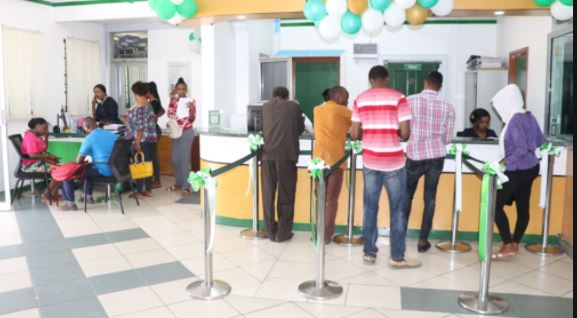
Customers are served at a bank . PHOTO | FILE
Dar es Salaam. Financing of economic activities by banks improved in April this year, rising hopes of economic recovery and availability of loans, a new Bank of Tanzania (BoT) report has shown.
According to the Bank of Tanzania, credit extended by banks to the private sector grew by 4.8 percent in April compared with 2.3 percent in the preceding month.
However, the growth is slightly below 5.8 percent registered in the corresponding period of 2020.
“The recovery of credit to the private sector is attributed to supply of loanable funds consistent with sustained monetary policy easing, ongoing implementation of measures to improve business environment and easing of lockdown restrictions,” stated the central bank in its monthly economic review for May.
Bankers say the development was due to a significant improvement in the agricultural sector and a favourable business environment, especially for strategic crops.
“Opportunities have also increased in the private sector especially Small and Medium Enterprises which were not significantly affected by the global Covid-19 pandemic. This increased the scope of borrowers who also pay their loans on time,” said the Tanzania Bankers Association (TBA) chairman and CRDB Bank Plc chief executive officer, Mr Abdulmajid Nsekela yesterday.
He noted that by and large the business environment has improved and increased confidence for businesses to borrow.
Economists say the development signified that investors had positive expectations in Tanzania’s economy.
“This is a good thing. It means that going forward, investors will be investing and borrowing to expand businesses,” said Prof Samuel Wangwe.
He noted that while lending was increasing, banks’ focus was now ensuring a reduction of non-performing loans.
Since November 2020, the rate of credit to the private sector has been consistently going down with some of the economic activities recording negative trends. For instance in March this year, growth of credit was experienced in only three sectors including personal loans, hotels and restaurants, and transport and communication.
Agriculture, trade, mining and quarry, manufacturing and building and construction had negative trends.
However, the latest report indicates that agriculture loans increased while reduction of loans to sectors with negative trend was also slowing.
Economic activities that recorded strong growth of credit from banks were personal activities (largely representing lending by banks to micro, small and medium enterprises), followed by agriculture, and hotels and restaurant.
In terms of shares of the outstanding stock, personal activities continued to account for the largest share at 35.6 percent, followed by trade at 15.7 percent and manufacturing activities at 10.1 percent.
Meanwhile, credit extended to the central government, through the purchase of government securities, grew by 5.6 percent, and the central bank said it remained within the borrowing limit set forth in the 2020/21 government budget.





No comments :
Post a Comment